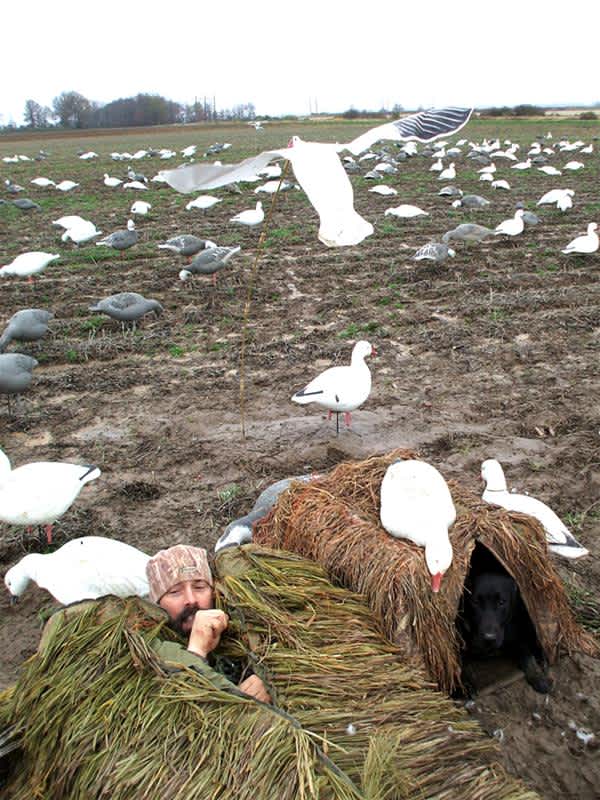Yamaha Outdoors Tip of the Week: Show Waterfowl Where to Commit
Yamaha 11.06.12

Food matters when you want to pull sky-bound ducks and geese into your spot. The spread you set is obviously defined by the calculated way you place your decoys in front of your gunning position. Most of all, it’s crucial to making that location all it can be.
- The Key: Set it up so that incoming waterfowl can pick an open spot to try and land where they already want to be — or where they realized they want to be on seeing your fake birds out there, enhanced by calling. Shoot them as they cup and commit.
Place that open spot so that it’s in a shooting lane you desire. Then wait, calls ready if needed. - Rough It Up: Ducks and geese don’t envision the pretty geometric spreads you do the night before while tossing and turning in a camp bunk. Sometimes you’ll need to set up ragged spreads to represent geese and ducks that have landed and are feeding comfortably — even though tight spreads might also suggest a concentrated food source. Know the difference.
- How Birds Move: What’s the flight path of your local waterfowl? Study it on your four Yamaha wheels. The spot you pick to hunt has to be in the reliable path of geese and ducks that move from where they loaf at night to where they might feed in the morning. Places like pastures and even marshes qualify here. Zero-grade rice fields and possibly unfrozen river systems do too.
- Learn the Alphabet: Terrain and traditional approach depending, some guys prefer a “C” spread of decoys, with the geese and ducks encouraged to land in the open area. For others, an “X” works, and gunners hide at the center of the set. Still others employ a “V” shape for their decoys, pointing that into the wind (weather depending). Others prefer the fishhook “J” way of putting out fakes. Tweak it as you hunt, especially as the breeze shifts.
For more tips on how you can show ducks and geese where to commit, please visit – Yamaha.com

